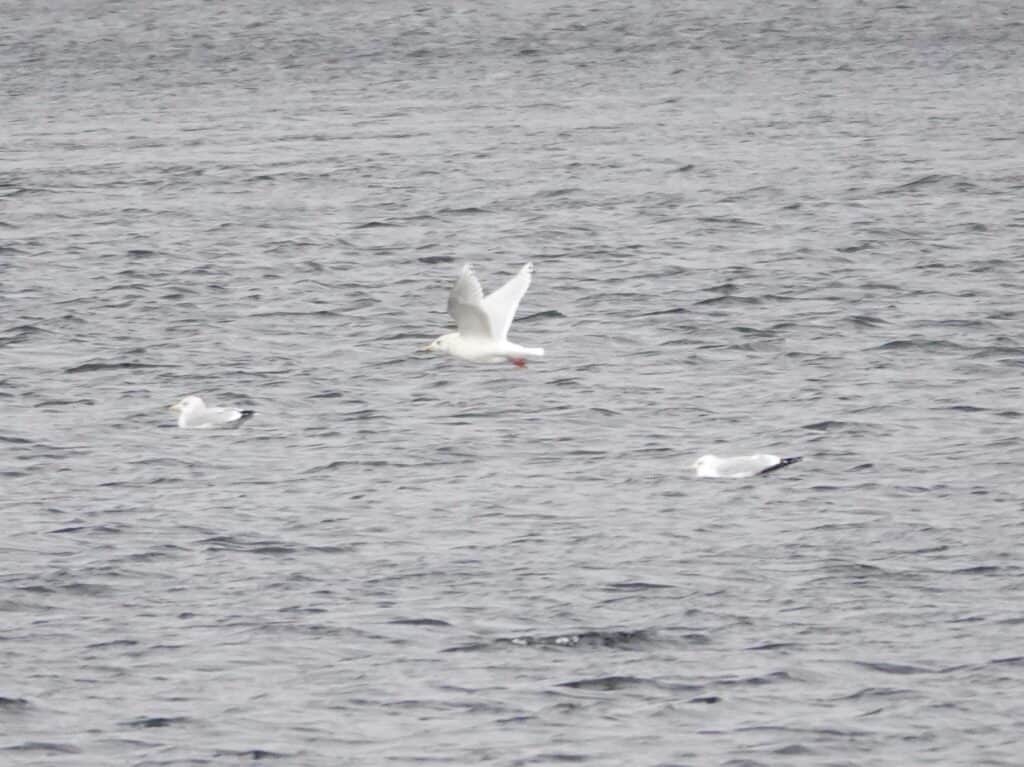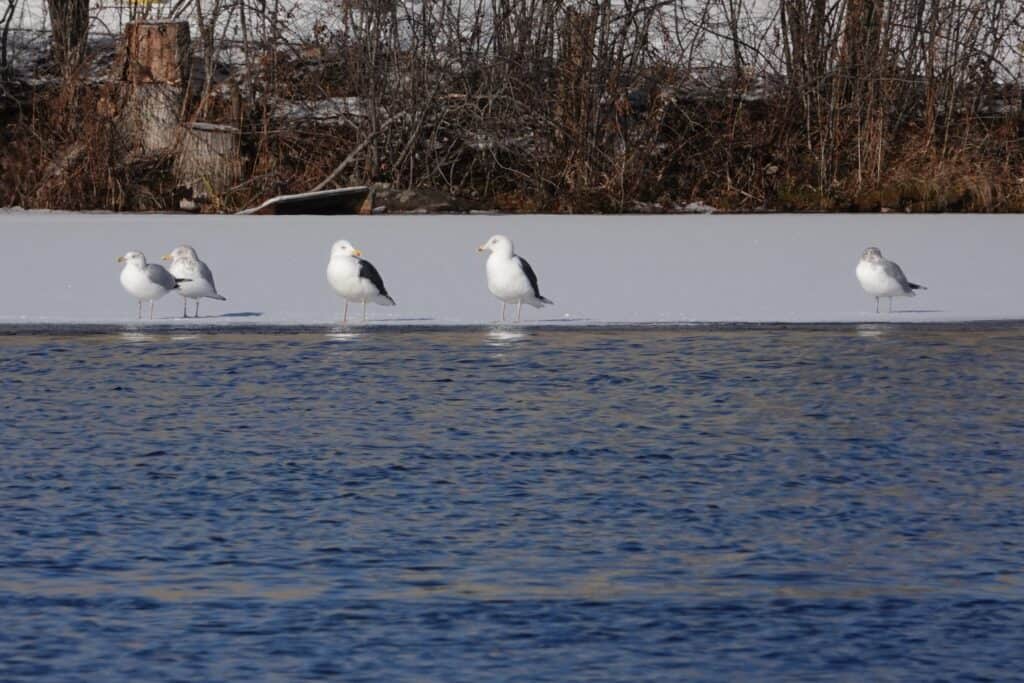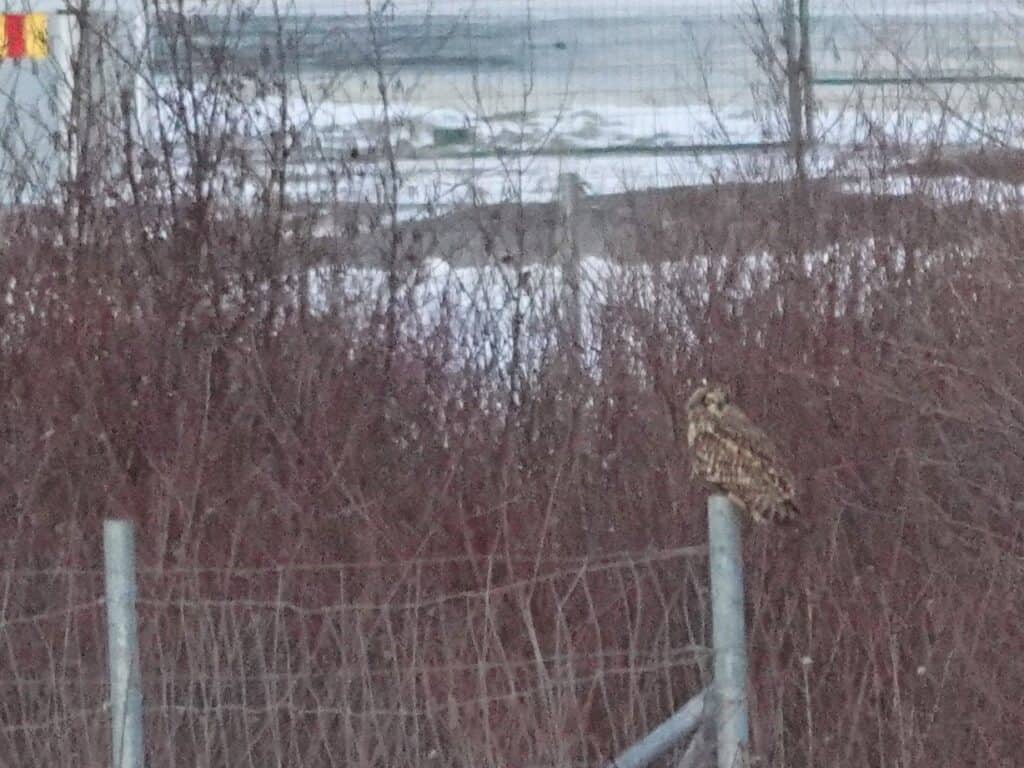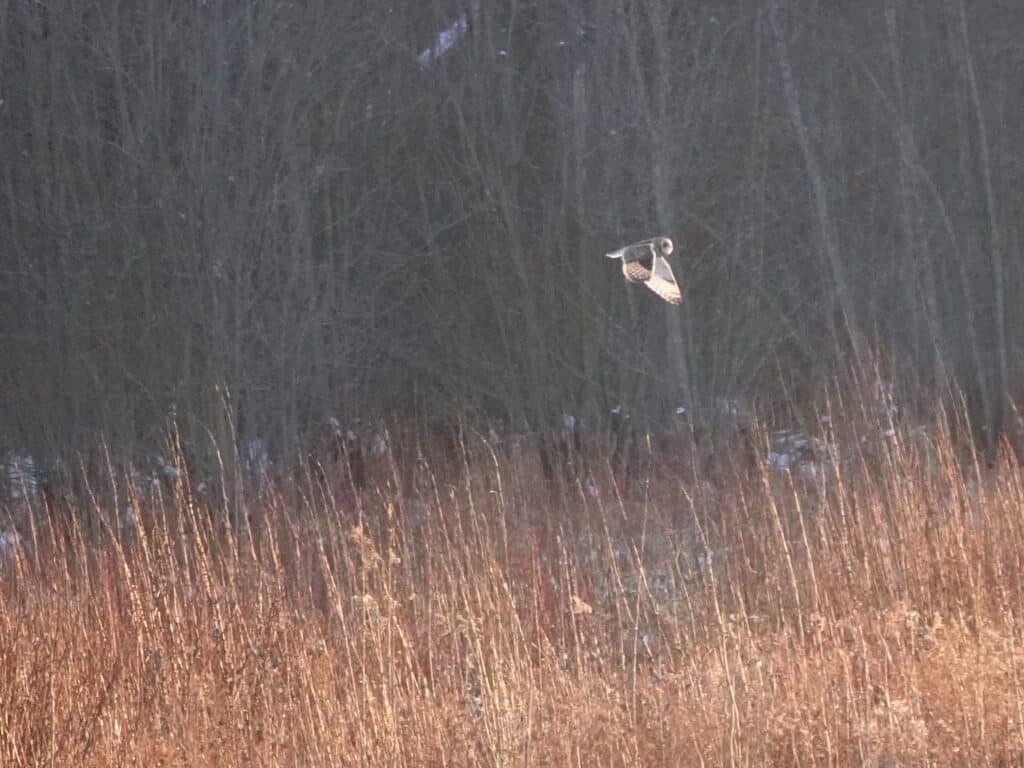Winter can be a great time for birding
Although it can seem like birds are few and far between in winter, there are actually many interesting species to be found. Some, like snow buntings, pine grosbeaks, and snowy owls are present at no other time of year. In fact, it is possible to see 75 or more species in the Kawarthas over the winter months.
Conveniently for us, many birds are associated with feeders in winter. Numbers, however, fluctuate a great deal from day to day and even hour to hour. Many species such as house finches, house sparrows, American goldfinches and even northern cardinals often form flocks in winter and may frequent only a small number of feeders. The presence of a hawk in the neighbourhood may also explain why, on any given day, there are fewer birds. Both sharp-shinned and Cooper’s hawks are fairly common in Peterborough in the winter and can be identified at considerable distances by their unique “flap‑flap‑glide” flight pattern.
In downtown Peterborough, you might also happen upon another raptor, the peregrine falcon. One or two are present most winters, thanks to the abundance of rock pigeons, a favourite prey species. These falcons sometimes perch on the Quaker Oats building on the west side of the Hunter Street Bridge.
Large numbers of common redpolls have also descended upon the Kawarthas this year, and many people are reporting them at feeders. Both evening and pine grosbeaks are also in the area. The latter, however, tends to shun bird seed, preferring fruit such as crab-apples and mountain-ash berries.
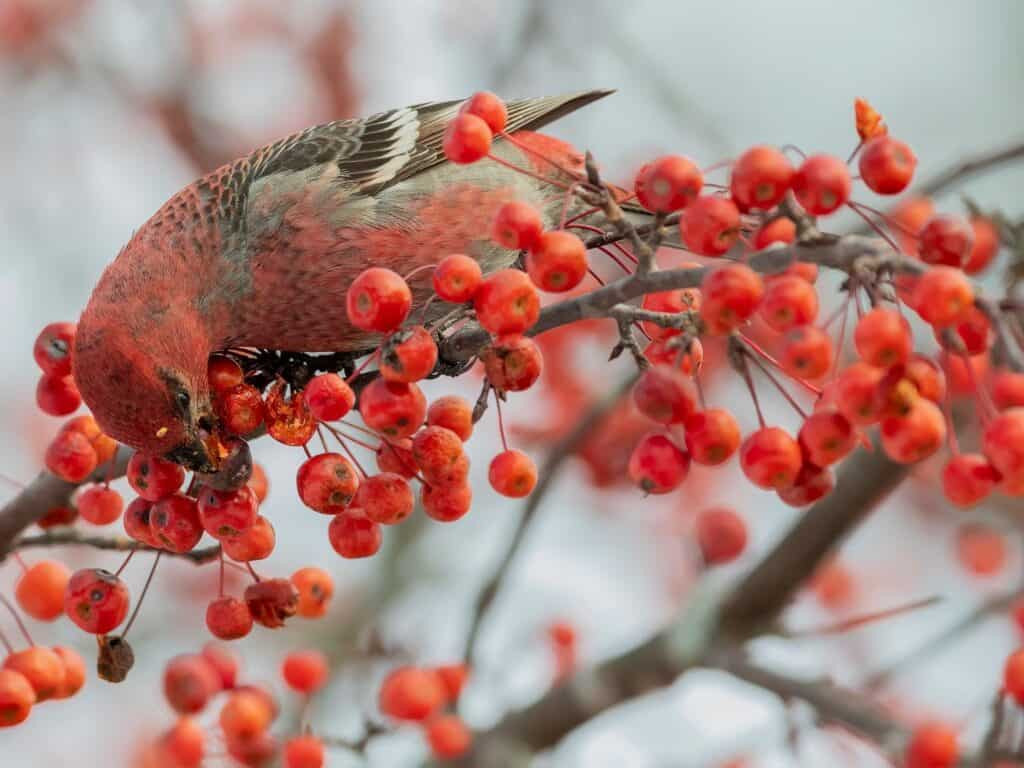
Where to look
Winter birding, of course, is not limited to feeders. Anywhere there is open water is always worth investigating. Ducks, like common goldeneyes and common mergansers, are often present. Keep an eye out, too, for trumpeter swans, bald eagles, gulls, and maybe a belted kingfisher. Areas that often remain ice‑free include Gannon’s Narrows, Young’s Point (east of the bridge), Lake Katchewanooka (end of Stenner Road), Lakefield (along Water Street), the Otonabee River, and parts of Little Lake (especially along Edgewater Boulevard).
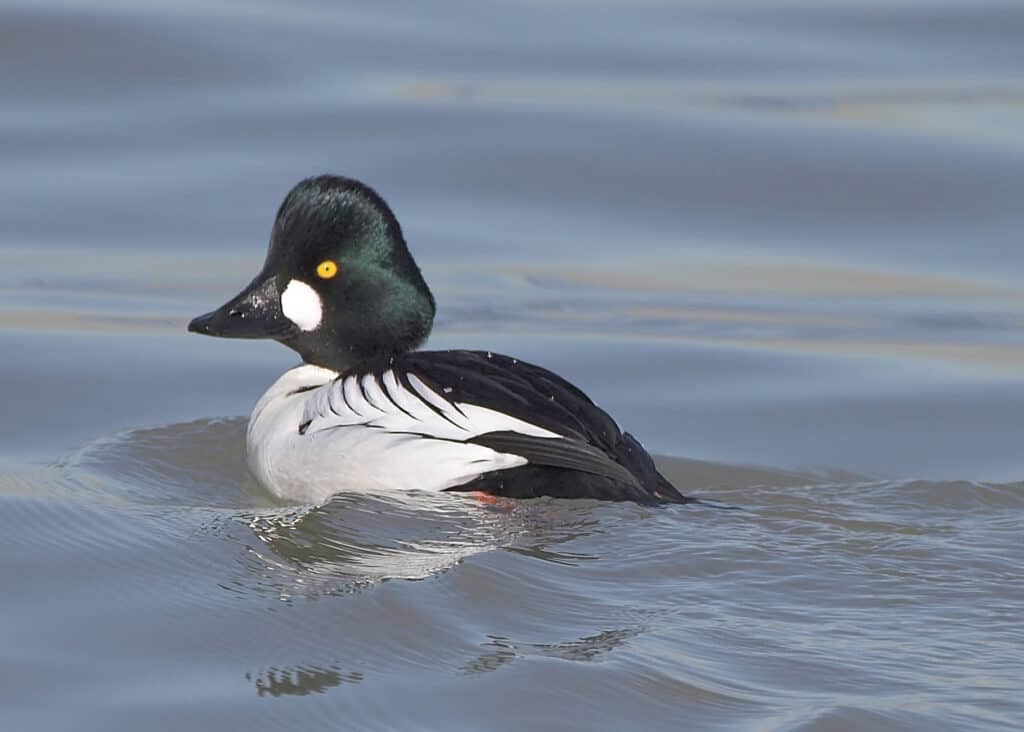
Local birders keep a particularly close eye on Little Lake in late fall and winter for uncommon gulls like the Iceland, glaucous, and great black-backed, all of which I saw earlier in the week. County Road 32 (River Road), which runs along the east bank of the Otonabee between Peterborough and Lakefield is also a favourite winter birding destination.
Birds can also be found in habitats which provide good cover such as stands of coniferous trees and dense shrubs along roads and rail-trails. Always look and listen for chickadees. Winter flocks of foraging chickadees often include white‑breasted and red‑breasted nuthatches, brown creepers, and both downy and hairy woodpeckers. There may also be dark-eyed juncos, American tree sparrows, and American robins. By pishing ‑ softly, but rapidly repeating the word “pish” – some of these birds will usually come in close to investigate the source of the unusual sound.
Open farmland also has much to offer. Watch for flocks of snow buntings flying over fields like swirling snow, red-tailed hawks perched in trees, and American kestrels on telephone wires. Snowy owls are also possible. In recent days, there has been a snowy owl on the Centre Line of Smith (County Road 24) between the Fifth and Sixth Lines.
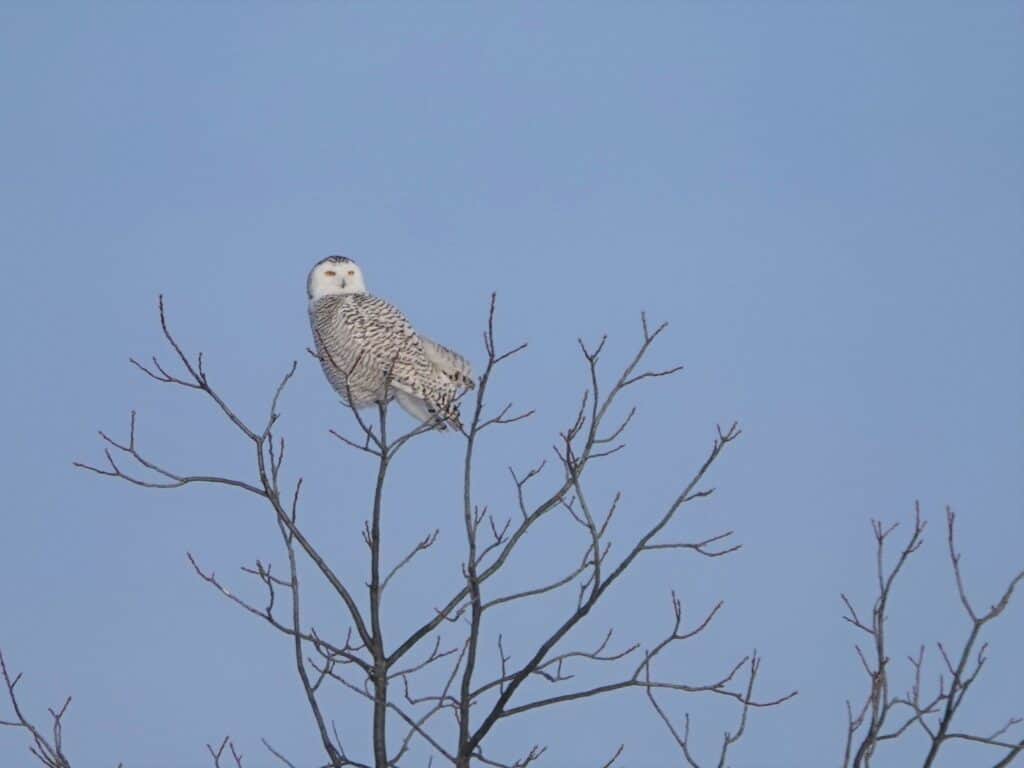
In overgrown fields with small trees, watch for northern shrikes. These solitary birds are easy to spot and identify because of their habit of perching on the uppermost twig of a tree. A shrike, a northern harrier, several rough-legged hawks, and three short-eared owls are being seen regularly along Moncrief Line, just east of the runway at the Peterborough Airport.
In the Shield country of the northern Kawarthas – Northey’s Bay Road, for example – common ravens are a regular sight and bald eagles are always possible. You might also happen upon a barred owl perched on a telephone pole or wire.
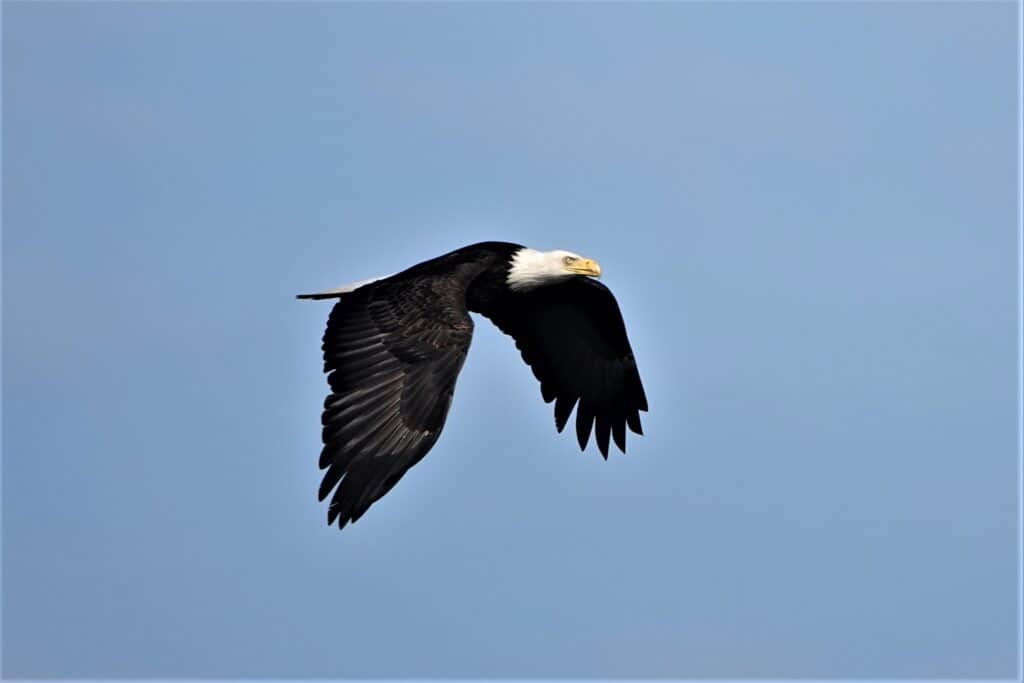
As far as time of day is concerned, early morning and late afternoon are often the most productive times for birding. There is also less traffic. Keep an eye on the upper branches of roadside trees where ruffed grouse can sometimes be seen feeding on buds at these times of day.
If you want to see or hear great horned or eastern screech owls, however, you’ll need to go out just before dawn or at dusk. Both species are quite vocal right now and will respond to recordings of their calls. Great-horned owls can turn up in most any large woodlot south of the Shield, including the Trent Wildlife Sanctuary. Screech owls tend to frequent wooded areas along the Indian and Otonabee Rivers. Mervin Line near the airport can be a good spot for this species.
In addition to the locations already mentioned, I would also recommend local parks such as Ecology Park, Beavermead, Rotary, and Meadowvale; Little Lake Cemetery; the South Drumlin Trail from Thompson Bay off of Scollard Drive to Nassau Mills Road; Miller Creek Conservation Area (bring sunflower seed for the chickadees at the bridge); and Mather’s Corners near Keene. A flooded corn field here attracts a variety of waterfowl in early spring.
Be sure to keep track of your bird sightings on eBird. This platform also allows you to explore the most recent sightings. You can set up “Alerts” that will send you emails of birds that are being seen in the area. I also suggest downloading the free Merlin bird app. Finally, consider participating in the Great Backyard Bird Count, which takes place from February 12 to 15. Go to https://www.birdcount.org/ for details. Ontario Field Ornithologists is also holding a Winter Birding Challenge that runs until February 28th. You’ll be contributing to community science and have a chance to win some great prizes. Details at http://www.ofo.ca/winterbirding
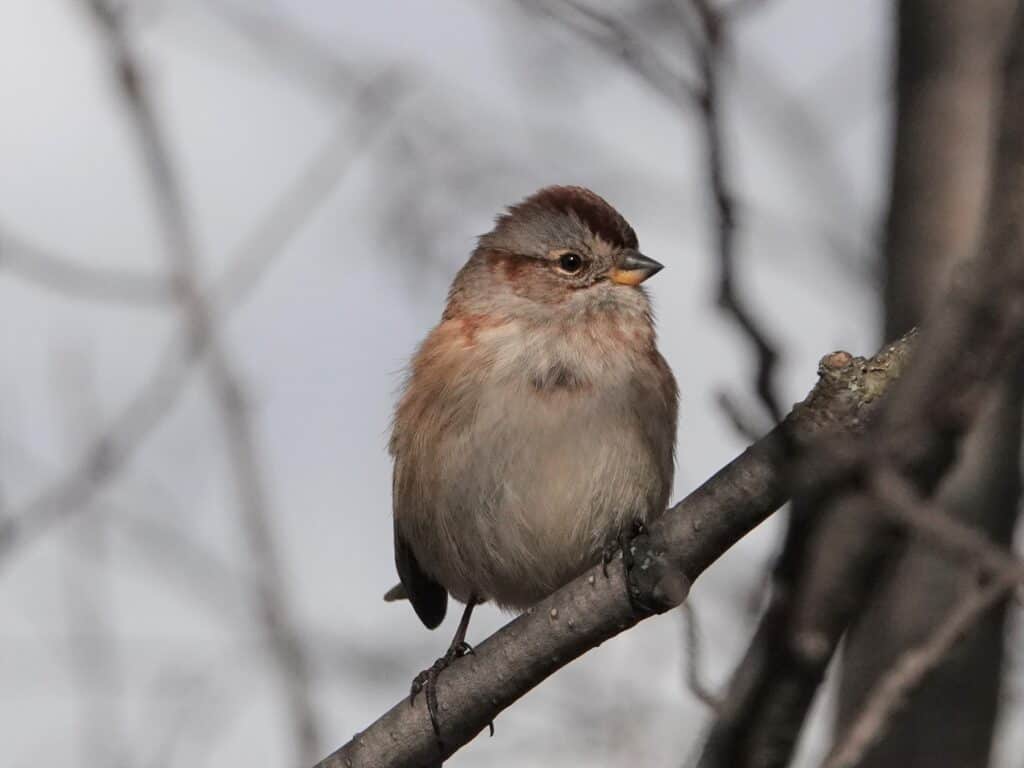
CLIMATE CRISIS NEWS
HOPE: The COVID-19 pandemic appears to be prompting a shift towards healthier cities. At theconversation.com, Anne-Marie Broudehoux of the Université du Québec explains how containment and physical distancing measures have contributed to an increased recognition of the importance of parks and other public spaces for people’s physical and psychological well-being. As part of the “pedestrianization” of streets, cities like Montreal are rethinking their entire urban mobility system. Learn more at https://bit.ly/38jwmQQ
ALARM: Peterborough experienced another record-warm year in 2020. No fewer than eight of the 12 months were warmer than usual. Five months – January, March, July, November, and December- were at least 3 C warmer than the 1971-2000 average for the same months. This year was not an anomaly. The mean annual temperature in Peterborough for the 11-year period from 2010 through 2020 was 6.88 C compared to 5.9 C for the 30-year period from 1971 to 2000. In other words, an average year in Peterborough is now about 1 C warmer than it used to be. Many temperature extremes need to be recorded (e.g., the record 35 days above 30 C we saw this summer) in order to see this level of warming. More details can be found at https://www.drewmonkman.com/temperatures/
To see a list of ways YOU can take action on addressing climate change, go to https://forourgrandchildren.ca/ and click on the ACTION button.
